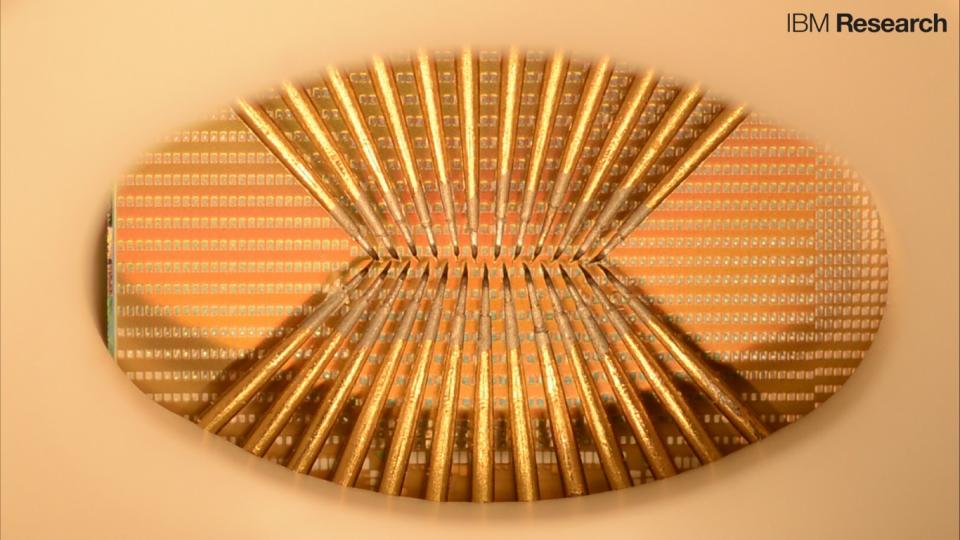IBM researcher builds a phase-change capable artificial neuron
Significantly, it's built of trusted materials and can scale down microscopically.

Computers have long been compared to artificial brains, but now IBM has followed the comparison and built a working artificial neuron. The tech giant's research center in Zurich created 500 of them to simulate a signal transfer similar to how the process works in an organic brain.
As other research in artificial signaling demonstrate, the real milestones are had when elements can be shrunk down to microscopic scale and still work. That's what makes IBM's accomplishment significant: their faux neurons are built out of well-known materials that can scale down to a few nanometers but can still activate with low energy, points out Ars Technica.
Organic neurons have membranes acting as signal gates that take a certain amount of energy to absorb. In the IBM version, that role is taken by a square of Germanium-Antimony-Tellerium (GST), a common ingredient in optical disks. Heat the GST enough and it changes its physical phase, from an amorphous insulator to a crystalline conductor. In other words, signal passes through when the faux membrane is hit with enough electricity to change into its crystal phase, then it resets to its amorphous one.
But the scientists needed the artificial neuron to have another characteristic of its organic counterpart: stochiasticity, or some randomness in when signals will fire. IBM says its neurons achieve this because its GST membranes never reset to the same configuration. This lets groups of them unexpectedly accomplish things that they could not if their results were perfectly predictable.
With these neurons, scientists may be able to create computers mimicking the efficient, parallel processing design of organic brains and apply its style of approach to decision-making and processing sensory information, suggests Ars Technica. But as they point out, constructing it might be the easy point: writing software for that kind of setup will be another challenge entirely.
